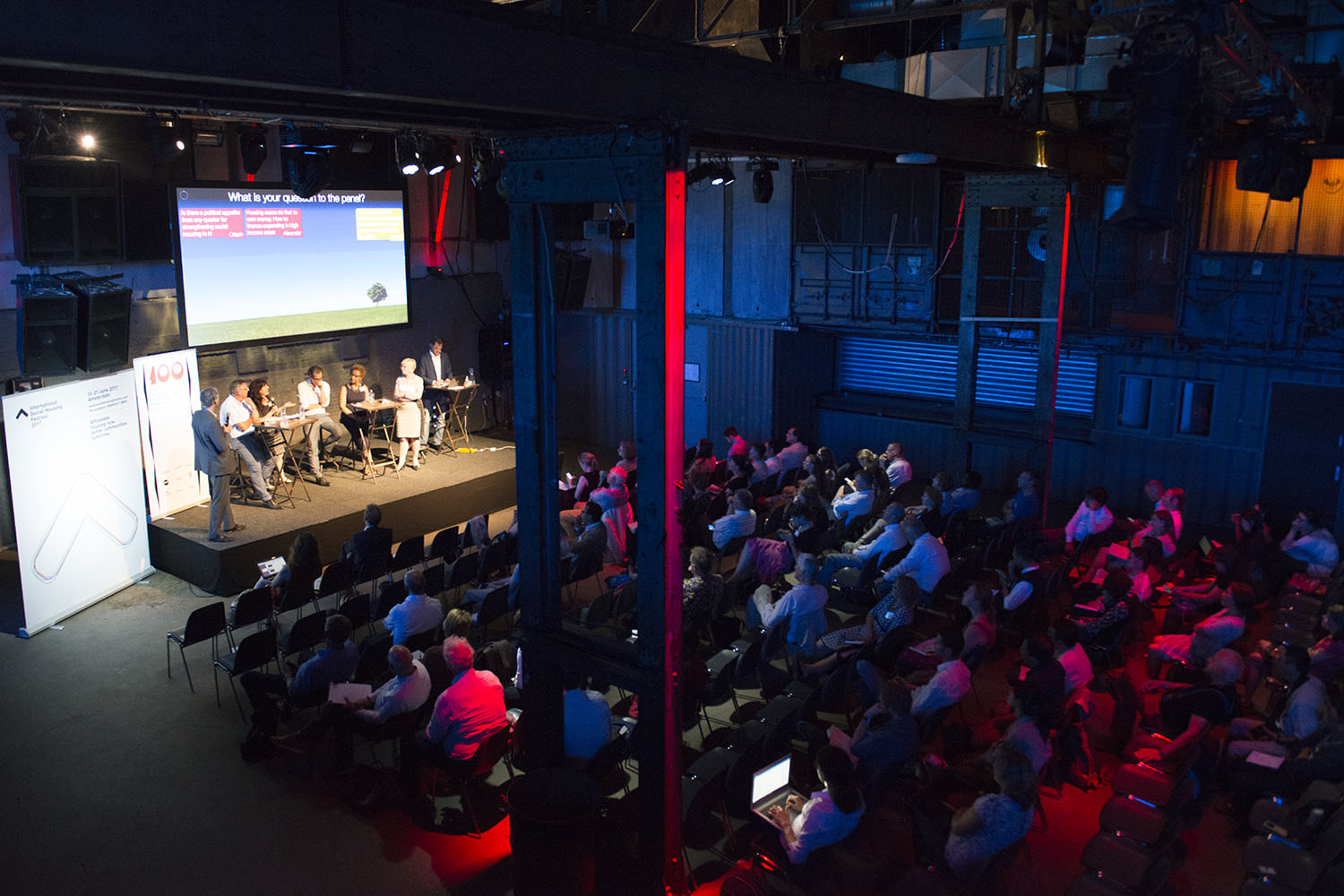
19 June 2017
Different cities, similar lessons: the AFWC’s pan-European discussion
On this balmy summer day a large group of people answered the call to come together to exchange knowledge and discuss the challenges that social housing associations have to cope with in modern times. Five representatives of larger European cities (Berlin, Copenhagen, Paris, Vienna, Amsterdam) presented their social housing context and the challenges they have had (and still have) to overcome. After this was a discussion followed by a panel of professionals in housing. It was incredible to see such a range of attendants discussing social housing as a continental issue, and its necessity on at least that scale. An interactive setting was accomplished via the use of buzzmaster, a tool via which people could type in questions and statements on their phones throughout the talks. These were then displayed behind the speakers on the projector screen and discussed after the talks, and gave the event an accessible and quite democratic feel.
“The purpose of social housing organizations is to provide adequate housing for all in need, at a reasonable rent, and to give residents influence on their living conditions” (Anne Sophie, Copenhagen).
Despite different contexts, cultural, political and the rest, many of the same challenges are faced across all five cities. Providing adequate housing is becoming increasingly harder in all of them, because of four major reasons:
1. all cities are experiencing a significant growth of inhabitants that need to be accommodated. This growth is central to the survival of the cities and their values, as they all strive for openness, a diverse crowd of residents and tolerance.
2. once people enter social housing they are often not motivated to move out, and this remains the case even when they can afford to purchase a property or rent on the private market.
3. building costs and costs of land are rising as well, which makes it more difficult for social housing organizations to gain access to new ground for which to build on.
4. the gap between places provided by social organizations and private organizations, by rent per square meter, is increasing significantly.
What also came out was the importance of social housing as a crucial aspect of any large-scale urban planning project that aims to be equitable. Looking at a map by income of Copenhagen it is hard to discern any homogenously rich or poor neighborhoods in the fairly small city, largely down to its 47 housing estates. In Paris, the current urban planning trajectory of increasing the inner city’s population—that is, densifying an already table-toppingly dense city— must be done in a way that is smart and fair, and the inclusion of social housing in this equation is an obvious way to do this.
The case studies of all the cities stress the importance of social housing as they strive towards a socially mixed city via social housing. Moreover, it enables access to the city for everyone. It was interesting to hear thee differences in accessibility of social housing. In some cities, there are no restrictions on who can enter the social housing sector (such as Copenhagen, and this announcement triggered some scattered yet excited applause), while in others there are income caps on who can access the social housing sector.
In order to solve the housing shortage all have set their policies towards an increase in social housing and towards a construction of many more new dwellings, into the thousands. In Paris there is a rule that for every new housing project constructed, at least 30% of the floor space should be used for social housing. The demand being framed as a matter of floor space rather than units is a smart one that can help preclude lesser quality social units being built.
The meeting above all underlined that a productive way to fight for social sustainability and fairness in our own cities is to help others do the same. There is much that we can and should learn from one another.




Comments